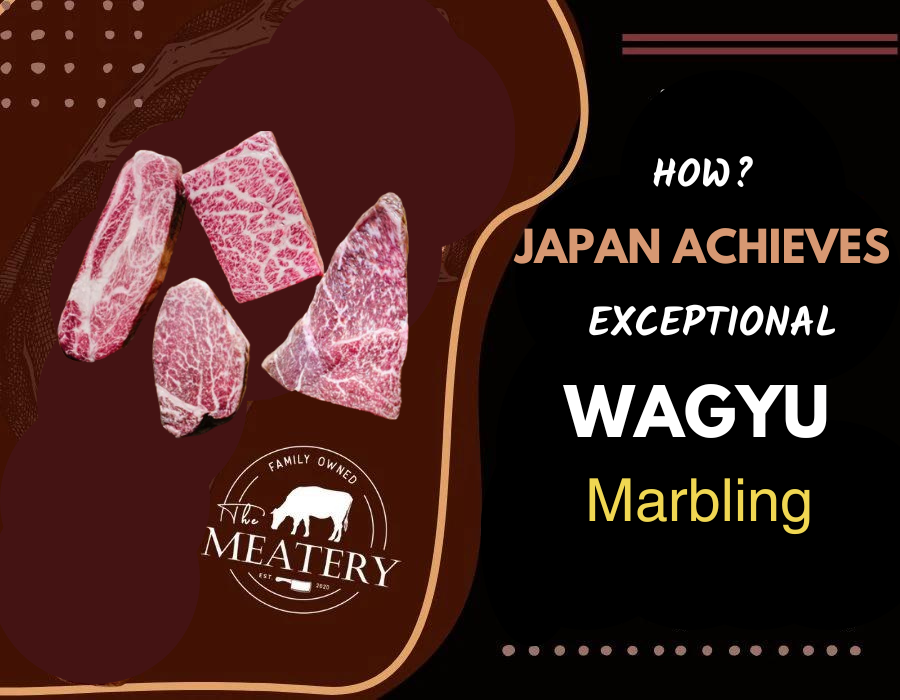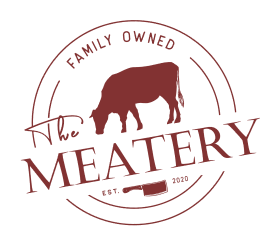Wagyu beef. The mere mention evokes images of melt-in-your-mouth tenderness, rich, buttery flavor, and those beautiful streaks of marbling that make chefs swoon. But what exactly is Wagyu, and how do Japanese farmers achieve this level of marbling that sets their beef apart from the rest? This article delves into the fascinating world of Wagyu farming, exploring the specific breeds, meticulous raising practices, and scientific reasons behind the legendary marbling effect.
The Wagyu Legacy: A Breed Apart
Wagyu (meaning "Japanese cattle") refers to four specific breeds of cattle native to Japan: Japanese Black (Kuroge Wagyu), Japanese Brown (Akage Wagyu), Japanese Shorthorn (Mukaku Wagyu), and Japanese Shorthorn polled (polled refers to cattle without horns). These breeds have been meticulously bred and protected for centuries, resulting in a unique genetic predisposition for intramuscular fat deposition, the very essence of Wagyu's marbling.
Raising Wagyu: A Labor of Love
Wagyu cattle are treated like royalty throughout their lives. Here's a glimpse into the meticulous care they receive:
- Lineage and Selection: Only the finest Wagyu bloodlines are used for breeding, ensuring superior genetics for marbling. Strict pedigree records are maintained, and breeding programs are carefully managed to preserve and enhance desirable traits.
- Stress-Free Environment: Wagyu are raised in clean, comfortable enclosures with ample space to roam. Minimizing stress is crucial for promoting healthy fat deposition. Factors like noise levels, temperature control, and social interaction within the herd are all carefully considered.
- Meticulous Feeding: A carefully balanced diet is key. Wagyu are often fed a combination of high-quality hay, grains like corn and barley, and supplements rich in protein and essential fatty acids. The specific feed ration is adjusted throughout the animal's life to optimize marbling at different stages. Some farmers experiment with unique feed additives like beer or sake, though the scientific evidence behind these practices remains inconclusive.
- Massage Therapy: Believe it or not, some Wagyu farmers even incorporate gentle massages into their routine. While the scientific evidence for its direct impact on marbling is limited, these massages are believed to further promote blood circulation and fat distribution within the muscle tissue, potentially contributing to a more even marbling pattern.
The Science of Marbling: Beyond Genetics
Genetics play a significant role, but understanding the science behind marbling paints a clearer picture. Wagyu cattle possess a higher concentration of myostatin genes compared to other breeds. Myostatin is a protein that inhibits muscle growth. With lower myostatin activity, Wagyu cattle develop less muscle and more intramuscular fat, resulting in the coveted marbling effect. Additionally, Wagyu cattle have a higher number of smaller fat cells within the muscle tissue, leading to a finer and more evenly distributed marbling pattern.
The Art of Breeding: Maintaining Wagyu Purity
Maintaining the exceptional quality of Wagyu requires meticulous breeding practices. The Japanese government enforces strict regulations to ensure the purity of these bloodlines. Bulls and cows are performance-tested based on factors like marbling score, growth rate, and carcass quality. Only the top performers are allowed to contribute to the next generation, guaranteeing the continued improvement of Wagyu genetics.
This rigorous approach stands in stark contrast to attempts to replicate Wagyu marbling elsewhere in the world. While crossbreeding Wagyu cattle with other breeds can produce marbled beef, it often falls short of the exceptional quality found in purebred Japanese Wagyu.
The Wagyu Grading System: A Mark of Excellence
The Japanese Beef Marble Score (BMS) and Japanese Beef Quality Score (BQS) are two crucial factors when it comes to Wagyu.
- BMS: This score assesses the quality, quantity, and distribution of intramuscular fat. Scores range from 1 to 12, with higher scores indicating more and finer marbling.
- BQS: This score evaluates overall meat quality based on factors like color, firmness, and fat color. Scores range from A to C, with A being the highest grade.
A Culinary Adventure: The Allure of Wagyu
Wagyu beef is more than just meat; it's a culinary experience. The exceptional marbling creates an unparalleled tenderness and richness of flavor. When cooked to perfection, Wagyu literally melts in your mouth, leaving a luxurious, buttery taste unlike any other type of beef.
Beyond the Plate: The Diverse Uses of Wagyu
While Wagyu steaks are undoubtedly the most celebrated expression of this prized beef, its culinary applications extend far beyond the grill. Here's a glimpse into the versatility of Wagyu:
- Sukiyaki: This traditional Japanese hot pot dish features thinly sliced Wagyu simmered in a savory broth with vegetables and other ingredients. The melt-in-your-mouth texture of Wagyu elevates the sukiyaki experience to a whole new level.
- Shabu-shabu: Similar to sukiyaki, shabu-shabu involves thinly sliced Wagyu briefly swirled in a boiling pot of water or broth. The quick cooking method preserves the natural flavors and tenderness of the meat.
- Wagyu Tataki: Thinly sliced Wagyu is seared on the outside and left raw in the center, creating a delightful contrast of textures and a burst of flavor in each bite.
- Wagyu Ground Beef: Don't underestimate the power of Wagyu ground beef. The rich marbling adds depth and flavor to burgers, meatballs, and even bolognese sauce.
- Wagyu Brisket: While Wagyu brisket requires a longer cooking time due to its higher fat content, the result is incredibly tender and flavorful, perfect for slow-cooked dishes like pulled beef or pastrami.
The Ethical Considerations of Wagyu Farming
Wagyu farming practices raise some ethical considerations, particularly regarding animal welfare. The focus on maximizing marbling can sometimes lead to concerns about restricted movement and the overall well-being of the animals. However, it's important to note that responsible Wagyu farmers prioritize the health and comfort of their cattle. Look for Wagyu producers who adhere to high animal welfare standards, ensuring the cattle have ample space to move, access to clean water and fresh air, and humane treatment throughout their lives.
The Future of Wagyu: Innovation and Sustainability
The future of Wagyu farming is likely to see advancements in areas like:
- Genetic Engineering: While the use of genetic engineering in Wagyu breeding is currently not practiced, future research might explore ways to further enhance marbling and other desirable traits while maintaining the ethical treatment of animals.
- Sustainable Practices: The environmental impact of Wagyu farming is a growing concern. Researchers are exploring ways to optimize feed rations to reduce emissions and improve resource efficiency.
- Cellular Agriculture: This emerging technology involves growing meat cells in a lab setting, potentially offering a more sustainable alternative to traditional Wagyu farming in the future.
Exploring the World of Wagyu: Themeatery.com
Dive into the marbled world of Wagyu with The Meatery! We offer a premium selection of Wagyu beef, from melt-in-your-mouth Japanese A5 to flavorful Australian varieties. Explore our curated bundles perfect for Wagyu connoisseurs or curious first-timers. Treat yourself to decadent cuts like ribeye or adventurous options like Wagyu kushiyaki skewers. Our commitment to quality extends beyond Wagyu, with a wide range of meats, poultry, and more. Visit The Meatery and unlock a world of delicious possibilities.









